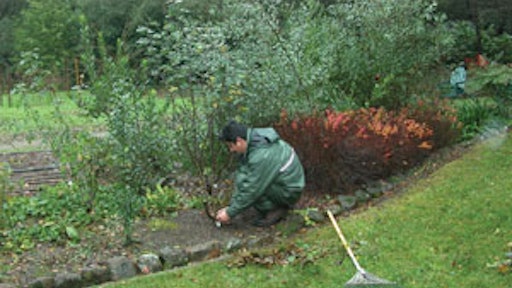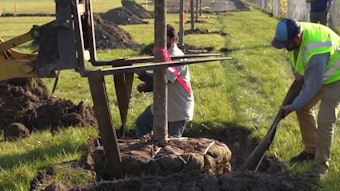
Our friends across the pond know a thing or two about cool, damp weather. So a recent article in a Scottish newspaper got my attention. It offers some good advice for landscaping and lawn care contractors who are forced to deal with soggy, post-flood conditions. Some are anticipating flooding in different parts of the U.S. this spring following the long, cold, snowy winter we’ve had. So these tips are quite timely for us here in the States.
In the article, Guy Jenkins, Johnsons lawn seed expert, says there is always hope for a soggy lawn. First and foremost, you just have to give it a little time. You might need to wait a little longer than when the water subsides. Getting on a lawn too soon can do some serious damage in the way of compaction, not to mention rutting and tearing.
But sometimes you simply can’t wait, Jenkins adds. If you’re on a lawn that is consistently waterlogged, Jenkins says sorting out a proper drainage system and sowing trusted grass seed will save you time and money later. On a poorly drained site where water lies on the surface at times, land drains are likely the only solution.
When water simply won’t drain away, you may have to replace the lawn with a new one, making sure that the turf is laid on a solid bed of sand overlaid with good topsoil. Additionally, smaller lawns on heavy clay soil can frequently be drained by raising them slightly above the adjoining ground level. A gravel edging to the lawn will carry away excess moisture.
Pricking or slitting the surface can also improve a waterlogged lawn. Try making one-inch slits or holes, although deeper spiking is better, especially with a tool designed to leave holes 4 to 6 inches deep. These holes can be filled with a free-draining material, such as topdressings or horticultural sand, which will allow the water to flow from the surface to deeper, less compacted layers.
Hand spiking tools are available but an ordinary garden fork can be used too. Alternatively, for larger lawns, use powered tools.
ORIGINAL STORY by By Hannah Stephenson




























